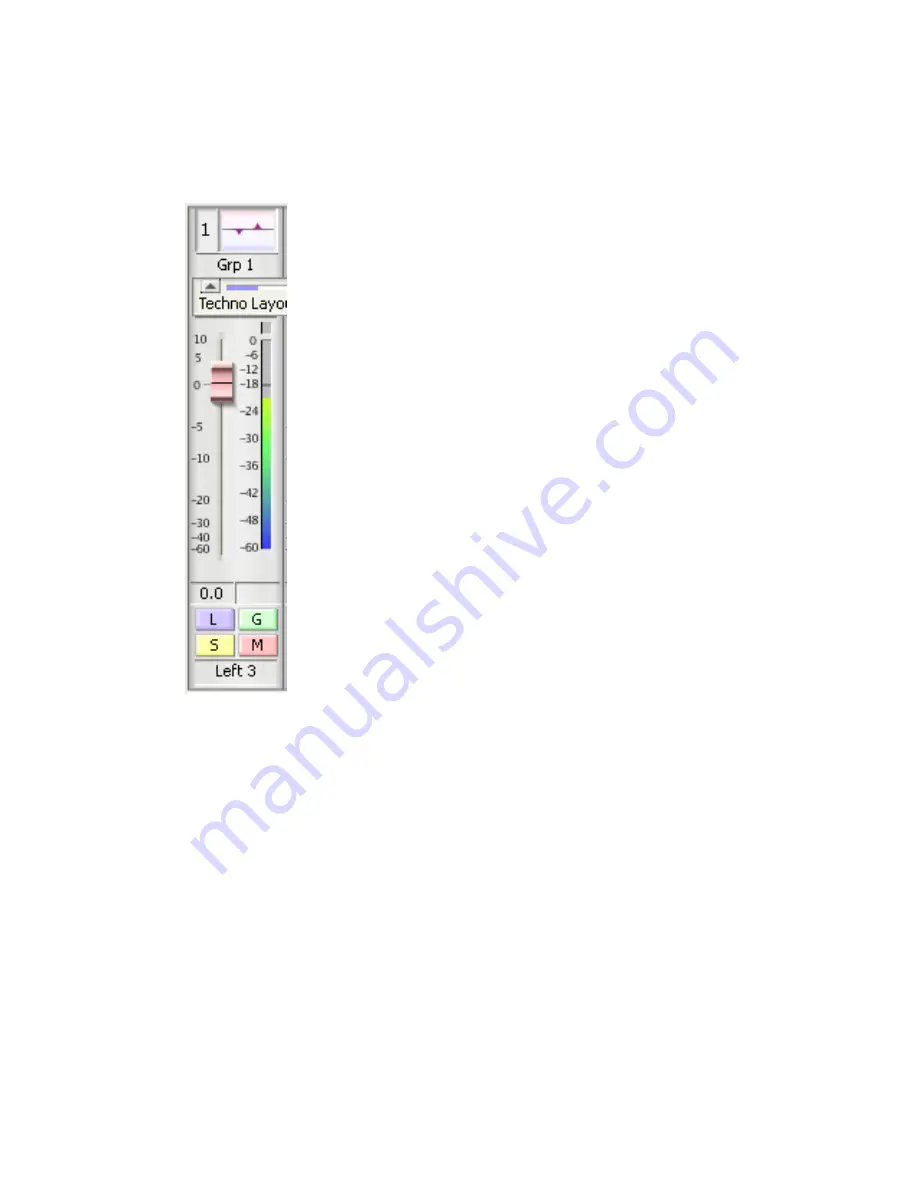
26
Input Channel
Click on the Input Gain tab to display input faders, use the upper horizontal scroll bar to view
hidden channels
EQ Thumbnail – double click to launch EQ control window
Audio is loaded onto a playback channel by dragging it from the TiMax
disk Audio list in the 'Files' window and dropping it onto this area on the
desired input channel. Stereo and multi-channel sound files automatically
are automatically ganged
This field contains the Routing Assignment for the input channel. A new
Routing can be created by setting the crosspoint gain and delay values on
the crosspoint row for this channel, then right clicking on this area and
selecting "New". Routing Assignments are stored in the current show file
and displayed in the Routing Library. A Routing Assignment can be
applied to an input channel by right-clicking on this area and selecting it
from the popup menu, or by dragging it from the Routing Library. An
Routing Assignment from one input channel can be dragged and dropped
onto another input channel
Link and Group controls
Solo and Mute controls.
Channel Label. Double-click to edit the label text. The channel labels are
stored in the Show file.
Bargraph metering shows PPM response, -2dB clip indicator, -18dB
nominal operating level. Equivalent to +4dBu analogue input level.
The Channel Gain in dB is displayed under the fader. The field is blank
when the channel is off (-oo dB). Double-click to enter a level value from
the keyboard.
The Group offset in dB is displayed under the bargraph meter. The Group
offset is the amount by which the level of the channel is affected by all
groups to which it is assigned.






























